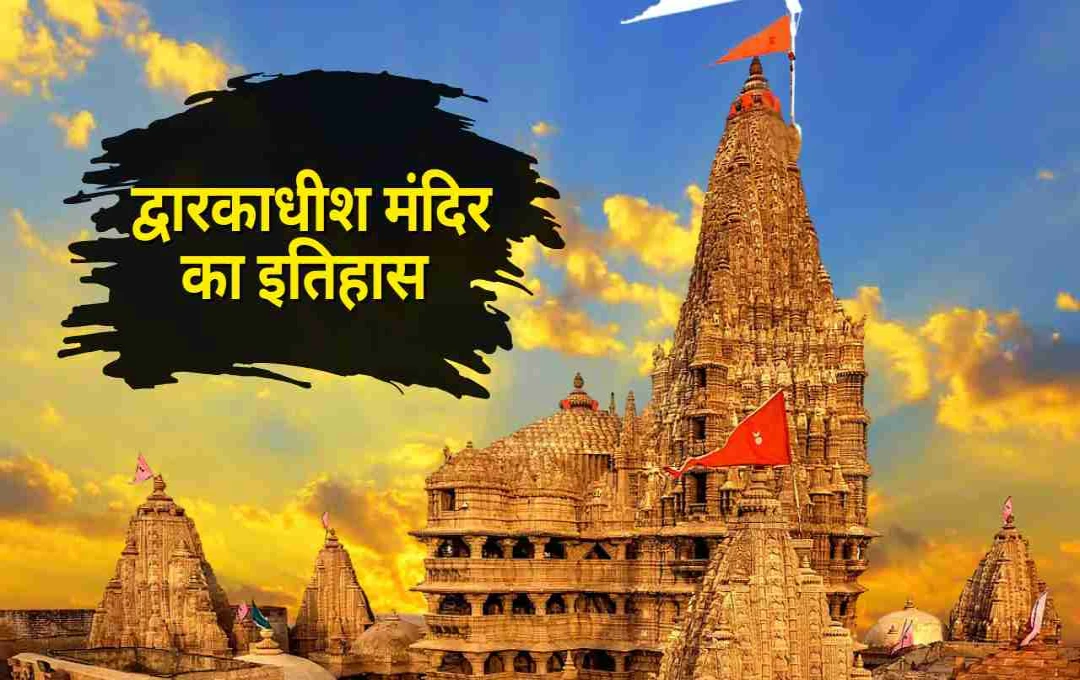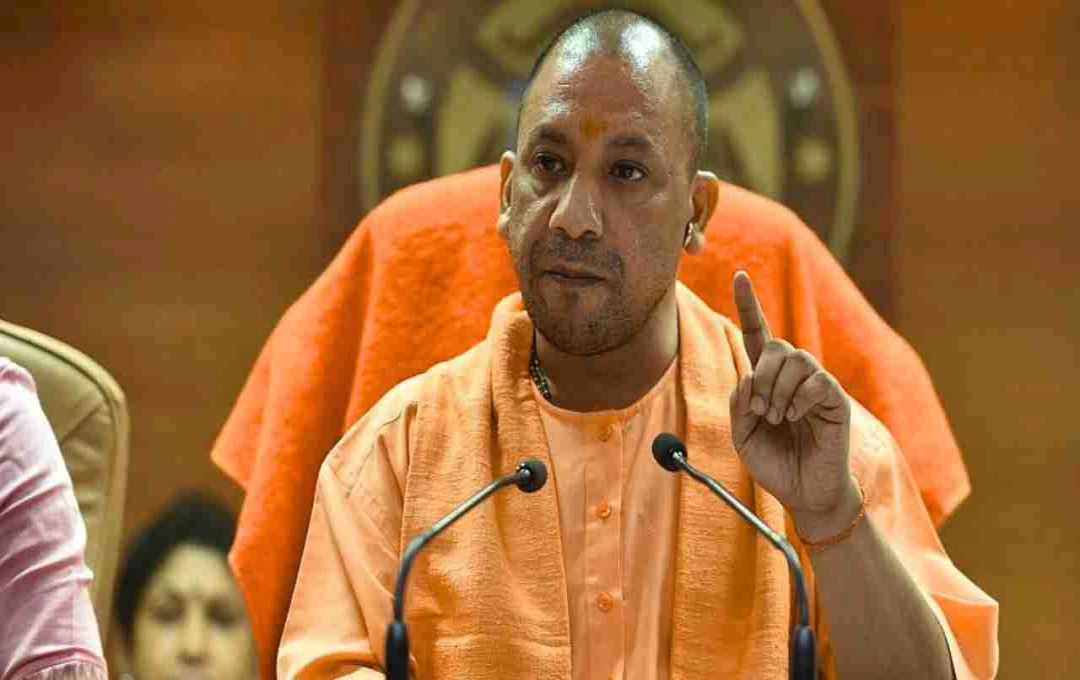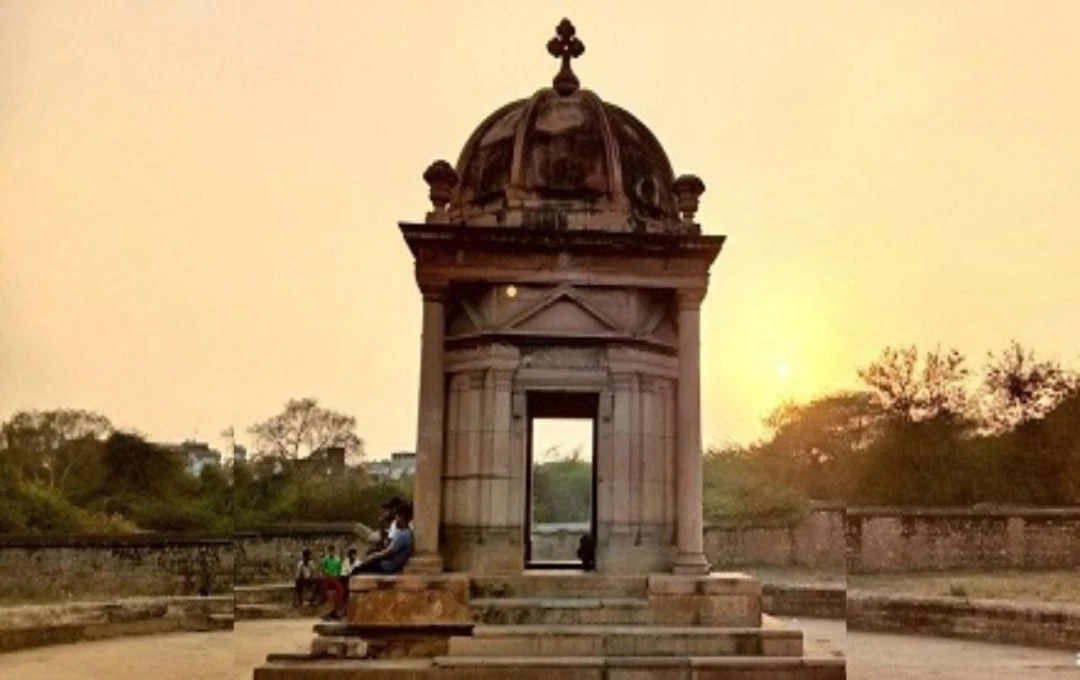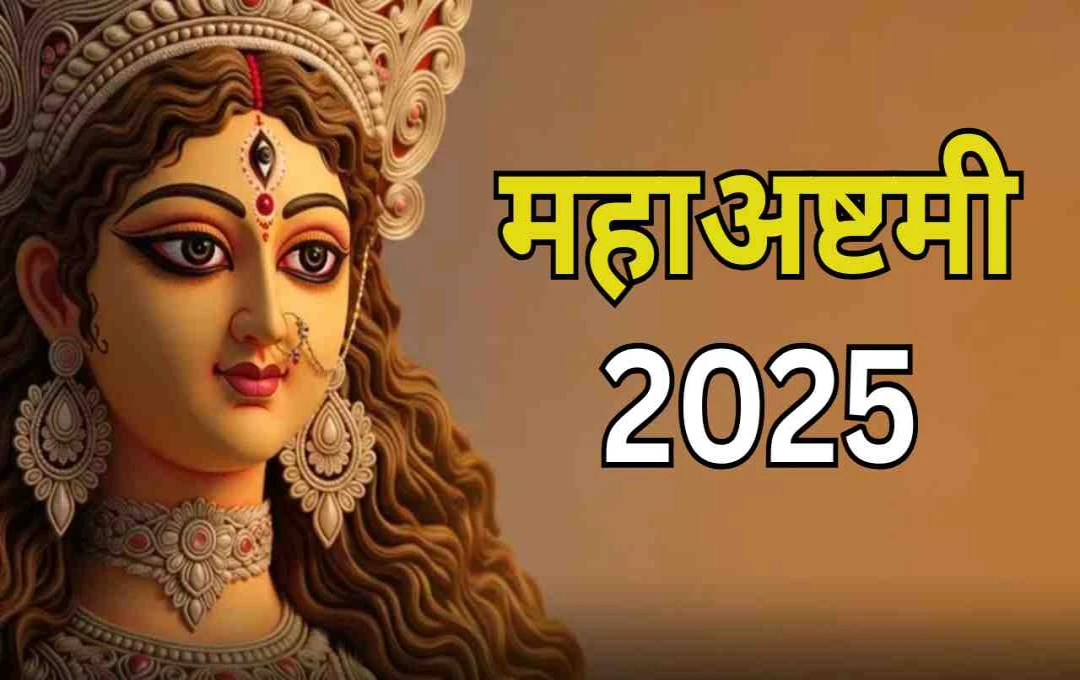India is home to thousands of temples, but some are not just centers of faith; they are also a confluence of history, culture, and spirituality. The Dwarkadhish Temple (also known as Jagat Mandir), situated on the western tip of Gujarat, is not only a place of worship for the divine form of Lord Krishna but also an extremely sacred pilgrimage site, one of the Char Dham. Dwarka is considered the karmabhoomi (land of action) of Krishna, and this temple is located in the heart of that divine city. In this article, we will explore the historical, religious, and cultural significance of this temple in detail.
Ancient History of the Dwarkadhish Temple
The historical roots of the Dwarkadhish Temple are very deep. Archaeological evidence suggests that the original structure of this temple was built around 200 BC. However, it was destroyed over time due to various attacks and natural disasters, and its reconstruction took place between the 15th and 16th centuries. It is believed that Mahmud Begada destroyed the temple in 1473 AD when the Vagher community of Dwarka tried to protect it. This event is like a dark chapter in the glorious past of the temple. Then, in 1559 AD, the temple was re-established by Aniruddhasram Shankaracharya, and the present idol of Dwarkadhish was installed.
Religious Significance and Connection to Char Dham
The Dwarkadhish Temple represents the west direction among the four Dhams of Hinduism. The other three Dhams are – Badrinath (North), Rameshwaram (South), and Puri (East). Adi Shankaracharya visited this temple and established the Dwarka Peeth near it, which became a major center of the Advaita Vedanta tradition of Hinduism. This temple is associated with the Vaishnava tradition and is dedicated to Lord Krishna, the eighth avatar of Lord Vishnu. This place is also included in the list of Divya Desams, one of the 108 holy places for Vaishnavas.
Mythological Story of the Dwarkadhish Temple
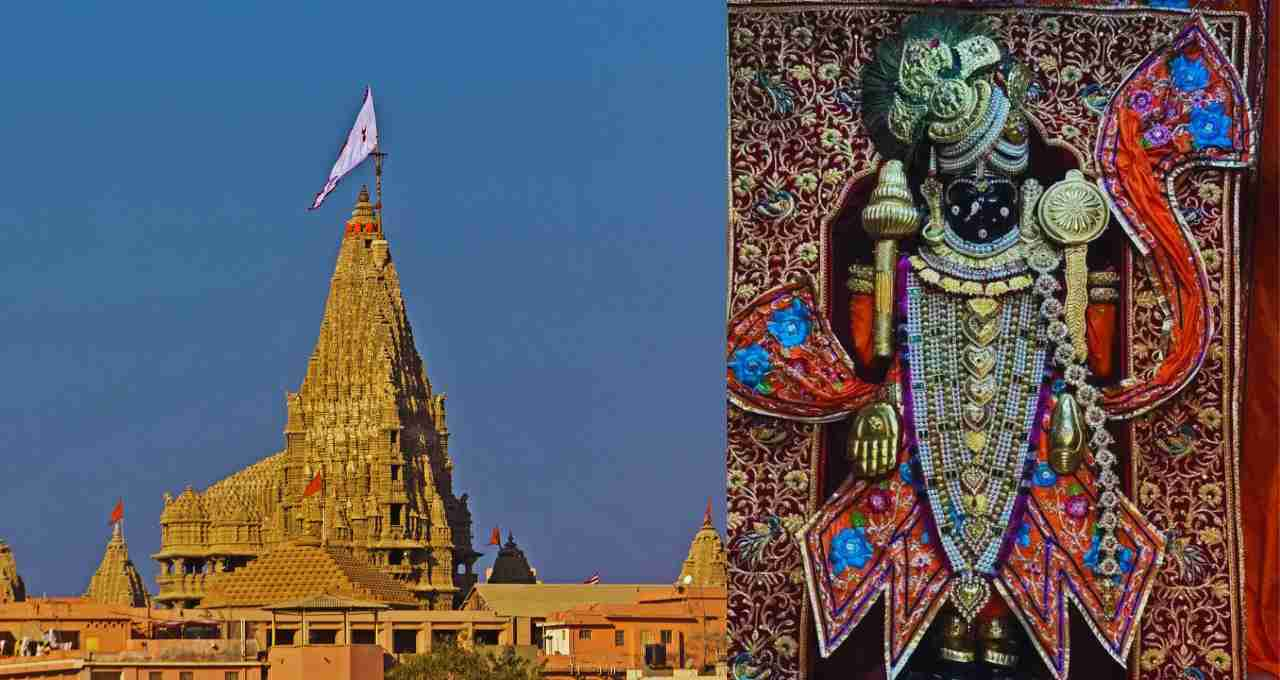
According to the Mahabharata and other texts, after leaving Mathura, Krishna established a new city on the coast to protect his Yadava clan, which was called Dwarka. This land was reclaimed from the sea. According to a folk tale, once, Rishi Durvasa came to meet Krishna and Rukmini. He demanded that the couple carry him in a chariot. Krishna and Rukmini humbly obliged. On the way, when Rukmini got tired and asked for water, Krishna drew Ganga water from the ground. Upon this, Rishi Durvasa became angry and cursed Rukmini to remain there. Today, the Rukmini Devi Temple is located at that place.
Architecture and Structure of the Temple
The architecture of the Dwarkadhish Temple is not only beautiful but also holds powerful symbolism. The temple building is made of limestone, and its carvings are extremely fine and intricate. Its spire is approximately 78 meters (256 feet) high and has five floors, supported by 72 pillars.
The temple has two main gates:
- Moksha Dwar (Entrance Gate)
- Swarga Dwar (Exit Gate)
There are 56 steps leading from Swarga Dwar towards the Gomti River.
The flag hoisted on the temple is also very special. This flag symbolizes the sun and the moon, and it means that as long as these two celestial bodies exist, the presence of Krishna will remain on earth. This flag is 15 meters long and is changed four times a day, and devotees get the privilege of hoisting it by making special donations.
The Historical Form of Dwarka City
The city of Dwarka, situated on the banks of the Gomti River, is mentioned as the ‘Dwarka Empire’ in the Mahabharata. The ancient anchors, nail marks on the rocks, and submerged structures found here prove the historicity of this city. Archaeologists believe that a major deluge in the sea once swallowed this ancient Dwarka, which is now being rediscovered through scientific research.
Cultural and Devotional Events
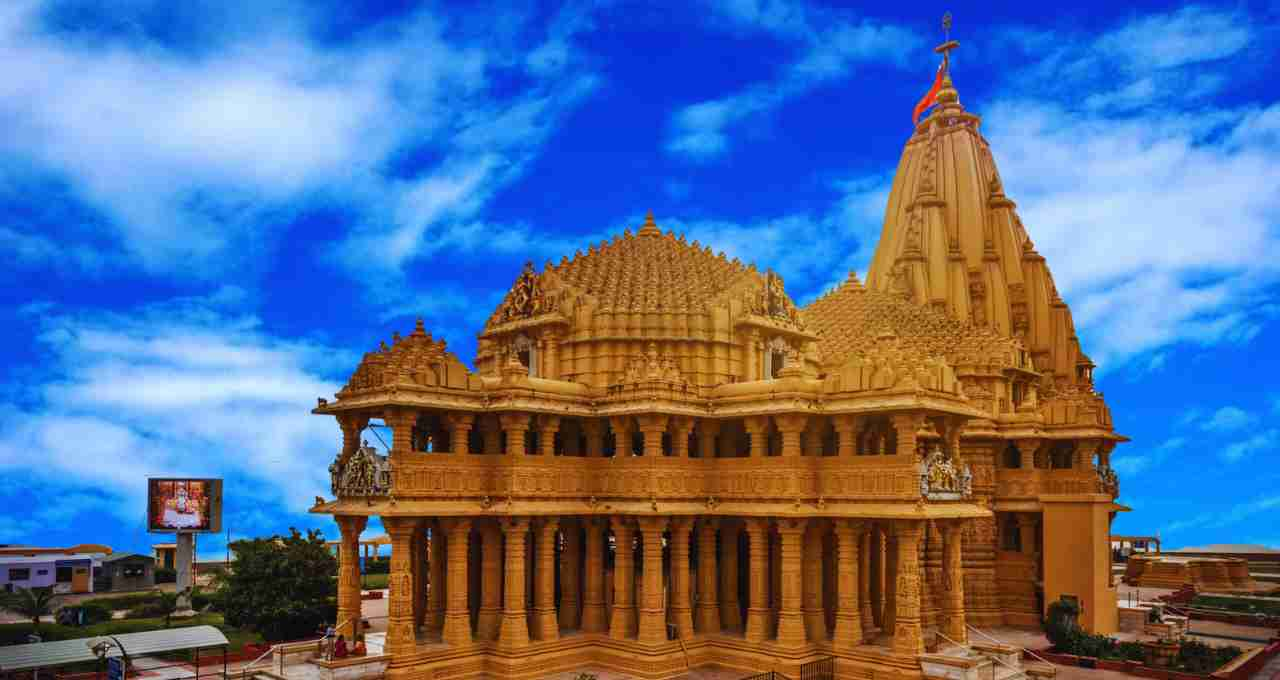
The historical significance of Dwarka city is very old. This city is situated on the banks of the Gomti River in Gujarat and is also mentioned in ancient texts like the Mahabharata. Dwarka is considered the capital of Lord Krishna. Some evidence has been found on the seashore here, such as old anchors, holes on the rocks, and submerged buildings, which indicate that it must have been a prosperous port at one time.
Archaeological experts believe that a major flood in the sea thousands of years ago submerged ancient Dwarka. Now, scientists and researchers are engaged in finding the remains of this city by going into the sea. These discoveries prove that Dwarka is not just a religious site but also an important part of India's ancient history.
Temple Timings and Rules
The Dwarkadhish Temple is open every day from 6 AM to 1 PM and then from 5 PM to 9:30 PM. Devotees can participate in the Mangala Aarti, Shringar Aarti, Rajbhog Aarti, and Shayan Aarti.
The Dwarkadhish Temple is not just a religious site, but a divine center of Indian culture, history, and spirituality. This temple is a witness to the era when religion, politics, and society flowed in a parallel stream. Even today, when you look at the stones, streets, and spire of Dwarka, you feel the echo of Krishna there.
